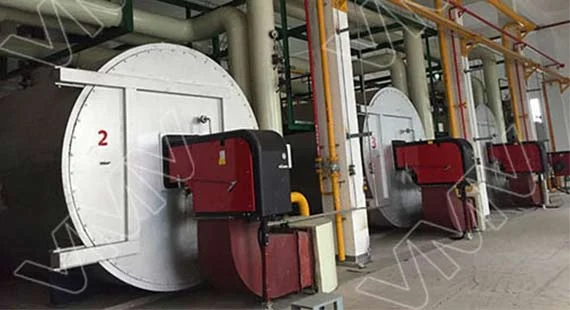Valve connections play a vital role in piping systems. They not only affect the system’s sealing performance, structural stability, and functional implementation, but also directly impact its safe operation and economic benefits. Therefore, when designing and installing piping systems, it is crucial to pay close attention to the selection, installation, and maintenance of valve connections to ensure their quality and reliability, thereby guaranteeing the safe, stable, and efficient operation of the piping system.

There are various types of valve connections, the most common of which are as follows:
1. Flange connection: This connection is reliable, offers excellent sealing, and can withstand high pressures and temperatures. It is suitable for a wide range of pipe diameters, from DN15 to DN4000 and even larger, and is suitable for a variety of industrial piping systems, such as the chemical and petroleum industries. The advantages of flange connections have their own unique advantages. However, the space requirements and the potential for bolt hole misalignment remind us that even the most robust connections must be handled with caution.
2. Welded connection: This connection is secure, offers excellent sealing, and can withstand high pressures and temperatures, but is inconvenient to install and disassemble. There are two types of butt weld connections: socket weld and butt weld. The former is suitable for valves of various sizes, pressures, and high temperatures, while the latter is generally suitable for valves ≤DN50.
3. Threaded connection: A simple connection method commonly used for small valves. It can be either directly sealed or indirectly sealed. The former often uses PTFE tape for corrosion resistance and excellent sealing.
4. Compression fitting: Quick and easy installation, requiring no welding or threading. Simply insert the tubing into the compression fitting and tighten the nut.
5. Wafer connection: A connection method that uses bolts to directly clamp the valve and pipe ends together.
Differences between different valve connection types
| Connection Type | Connection method | Sealing method | Scope of application | Advantages and Disadvantages |
| Flange connection | The valve body has flanges at both ends, corresponding to the pipe flanges, fixed with bolts | The seal is formed by connecting the flange, gasket and bolts. According to the shape of the joint surface, there are smooth, concave and convex, tongue and groove types. Different shapes are suitable for different pressure and medium conditions. | It is suitable for valves of various nominal sizes and nominal pressures, but has certain restrictions on high temperature working conditions (generally ≤350℃). It is widely used in industrial pipeline systems such as chemical and petroleum. | The advantages are reliable connection, good sealing, easy disassembly and maintenance, and a wide range of applicable pipe diameters; the disadvantages are high accessory costs, more troublesome laying of pipe insulation materials, and the overall weight and size may be larger. |
| Welding connection | The valve body has a welding groove and is connected to the pipeline by welding, which can be divided into butt welding connection and socket welding connection. | Welding creates a seal | Butt welding connection is applicable to various sizes, pressures and high temperature conditions; socket welding connection is generally applicable to valves ≤ DN50, and is often used in pipelines with high temperature, high pressure, highly toxic, flammable media, such as power station main steam pipelines and chemical high pressure reaction pipelines. | The advantages are firm connection, excellent sealing, and high overall strength of the pipeline system; the disadvantages are inconvenient installation and disassembly, requiring professional equipment and technicians, difficult subsequent maintenance and replacement, and prone to welding defects. |
| Threaded connection | Connected by internal and external threads, divided into direct sealing and indirect sealing | Direct sealing is the direct sealing of internal and external threads, which is often filled with lead oil, hemp or polytetrafluoroethylene raw tape; indirect sealing is the transmission of thread tightening force to the gasket, which makes the gasket play a sealing role. | Commonly used for small valves | The advantage is easy connection; the disadvantage is limited scope of application and relatively low sealing reliability. |
| Ferrule connection | Tighten the nut so that the cutting edge of the ferrule bites into the outer wall of the pipe to achieve connection | The ferrule is tightly combined with the outer wall of the tube to form a seal | Suitable for occasions that require quick installation and disassembly | The advantage is that the installation is quick and easy, without welding or thread processing; the disadvantage is that the sealing reliability needs to be paid attention to in long-term use, and the quality requirements of the ferrule are high. |
| Wafer connection | Use bolts to directly clamp the valve and the two pipes together | The valve’s built-in sealing structure plays a core sealing role, while the wafer flange mainly plays a fastening and positioning role. | Suitable for occasions with compact space layout and limited installation and operation space, such as pipe connections inside ships and narrow shafts in high-rise buildings | The advantages are simple structure and light weight; the disadvantage is that it requires a high sealing structure of the valve. |
Valve connections require routine maintenance, and safety precautions must be taken during this maintenance.
Before Operation
• Disconnect the power source: When servicing valves that are energized, pressurized, or heated, first disconnect the power supply, close the upstream valve, or release the pressure and heat. For example, when servicing electric valves, disconnect the circuit first. When servicing steam valves, close the air inlet valve first and release the steam to prevent risks such as electric shock, burns, or fluid injection during maintenance.
• Take protective measures: Wear protective clothing, hard hats, gloves, and goggles. When working with corrosive media, wear corrosion-resistant protective clothing and gloves to prevent injury.
During Operation
• Use tools properly: Use appropriate tools and operate them correctly. For example, when tightening a bolt with a wrench, choose the appropriate size and avoid excessive force to prevent the tool from slipping and injuring someone. When using power tools, ensure they are properly grounded to avoid electric shock.
• Prevent Media Leakage: During maintenance, monitor the valve for leaks. If leaks are detected, take prompt action, such as closing the valve or plugging the leak. Avoid direct contact with the leaking media to prevent poisoning, corrosion, and other hazards. After the operation
• Restoring safety devices: After maintenance is complete, ensure the valve and related safety devices, such as safety valves and pressure gauges, are restored to their original positions and functioning properly to ensure safe and stable valve operation.
• Cleaning up the maintenance site: Clean the maintenance site, return tools and parts to their proper locations, remove debris and oil, and maintain a clean work environment to prevent accidents such as slips and trips.
If you’re still struggling to purchase high-quality valves, or have other valve issues, please contact Newton.

